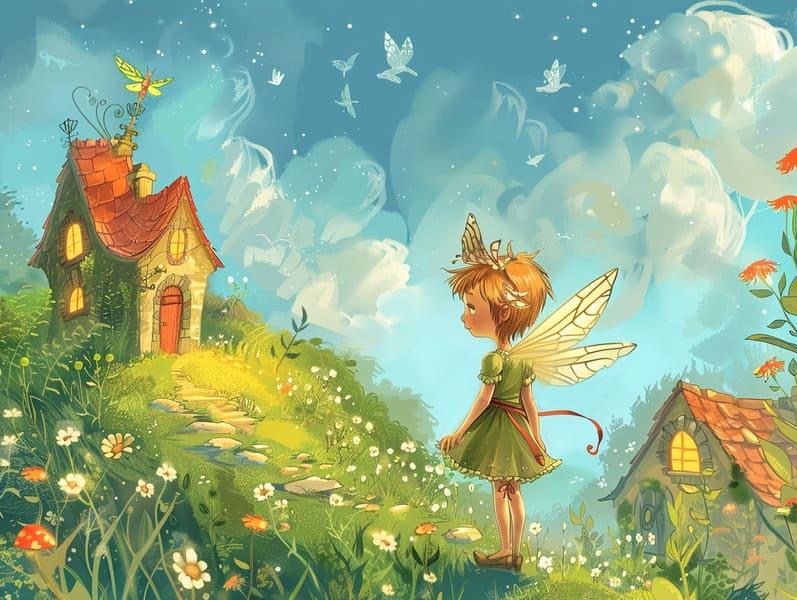The Evolution of Popular Fairy Tales with Its Timeless Magic.
The Evolution of Popular Fairy Tales with Its Timeless Magic.
Blog Article

Famous fairy tales have enduring presence. These stories have been narrated from one generation to the next long before they were ever inscribed. They emerged from a variety of civilizations, including European traditions. They were initially conveyed among mature audiences, often carrying themes and messages mirroring the societal norms and beliefs of the time.
The Grimm brothers, the two Grimm brothers, were among the first to assemble many of these beloved fairy tales. Their compilation, "Grimm's Fables," included stories like "The Story of Cinderella," "The Bread Crumb Trail," and "Snow-White and Rose-Red," which have since become cornerstones in the world of timeless fairy tales. Similarly, the Danish author's charming tales, such as "The Mermaid," and "The Little Duckling," have enchanted hearts worldwide, ensuring their place in the pantheon of iconic fairy tales.
Despite their ancient origins, fairy tales remain as impactful as ever, especially as kids' bedtime tales. These enchanting tales are now available in different formats, including colorful picture books, magical animations, and web-based fairy tales.
Their continued relevance can be credited to several captivating elements:
Life Lessons: Timeless fairy tales often share important moral lessons. Tales like "The Boy Who Cried Wolf" teach the benefit of sincerity, while "The Hare and the Tortoise" highlight the benefits of resolve and unpretentiousness. These narratives offer children clear distinctions between right and wrong, forming their moral compass in a tender yet deep way.
Kindness and Comprehension: Fairy tales frequently depict personalities facing trials and tribulations, urging kids to comprehend with their struggles and boost their triumphs. For instance, "The Tale of Beauty and the Beast" illustrates the virtue of seeing inner beauty to recognize the true character of a being, cultivating sympathy and understanding.
Cultural Recognition: Many old fairy tales are steeped in the cultural contexts from which they were born. Engaging with these narratives can provide informative snapshots into different social structures, developing a sense of cultural awareness and appreciation.
Inventiveness and Fantasy: The fantastical elements in fairy tales—enchanted forests—fire up children’s dreaming abilities. These narratives carry readers to otherworldly realms, motivating creative dreams and a sense of mystery that persists a lifetime.
Ancient fairy tales are not only whimsical but also pedagogical. They provide bewitching tools in cultivating various cognitive and emotional skills in the young. When ancient fairy tales are recited, they strengthen language development by teaching new vocabulary and elaborate sentence structures. This practice also boosts hearing perception and attention span, as young readers listen intently, keen to see what happens next.
Furthermore, discussing the themes and characters of classic fairy tales can promote cognitive skills and cognitive skills. Children are guided to discern popular fairy tales with morals patterns, foresee events, and realize cause and effect. These debates also boost the young say their thoughts and feelings, promoting their emotional intelligence.
In today’s digital era, the proliferation of online fairy tales has made these narratives more obtainable than ever. Online resources and web apps present comprehensive collections of bedtime fairy tales that can be explored or listened through anytime, anywhere. Fairy tales voiced are particularly widespread, featuring an engaging way for the young to engage with these enchanting tales. Audiobooks and voiced videos guide characters and settings to life, often accompanied by fantastical audio effects and soundtracks that elevate the storytelling journey.
The everlasting appeal of ancient fairy tales lies in their ability to adapt to present eras while continuing with their key morals. Contemporary adaptations of these stories often show more diverse protagonists and modern settings, making them understandable to today’s audience. However, the fundamental themes of gallantry, benevolence, and honesty remain unchanged, continuing to touch listeners of all ages.
Timeless fairy tales also offer a sense of coziness and homeliness. They give a well-ordered narrative with a plain beginning, middle, and end, often wrapping up with the solving of conflicts and the triumph of truth over falsehood. This certainty can be soothing for young ones, gifting a sense of constancy in an shifting world.
Timeless fairy tales continue to allure and educate new generations, maintaining their charm and relevance in modern society. As bedtime stories for kids, they yield a perfect blend of captivation and insight, facilitating moral values, empathy, and creativity. The accessibility of online storybooks and the prevalence of fairy tales told out loud ratify that these traditional narratives remain available to new generations.
By upholding and making known these narratives, we continue to celebrate the rich tapestry of creativity and cultural heritage. Whether you are exploring a artistically illustrated book, discovering a digital library, or listening to an sound book, the magic of bedtime fairy tales is always within reach. These narratives emphasize of the unfading spell of tales and its ability to tie us across generations and cultures.
Be it you are enjoying a beautifully illustrated book, seeing a online library, or listening on an read-aloud story, the spell of bedtime fairy tales is always within reach.
These narratives illustrate of the consistent essence of tales and its ability to unify us across centuries and lands, creating a bond that delights and instructs alike.